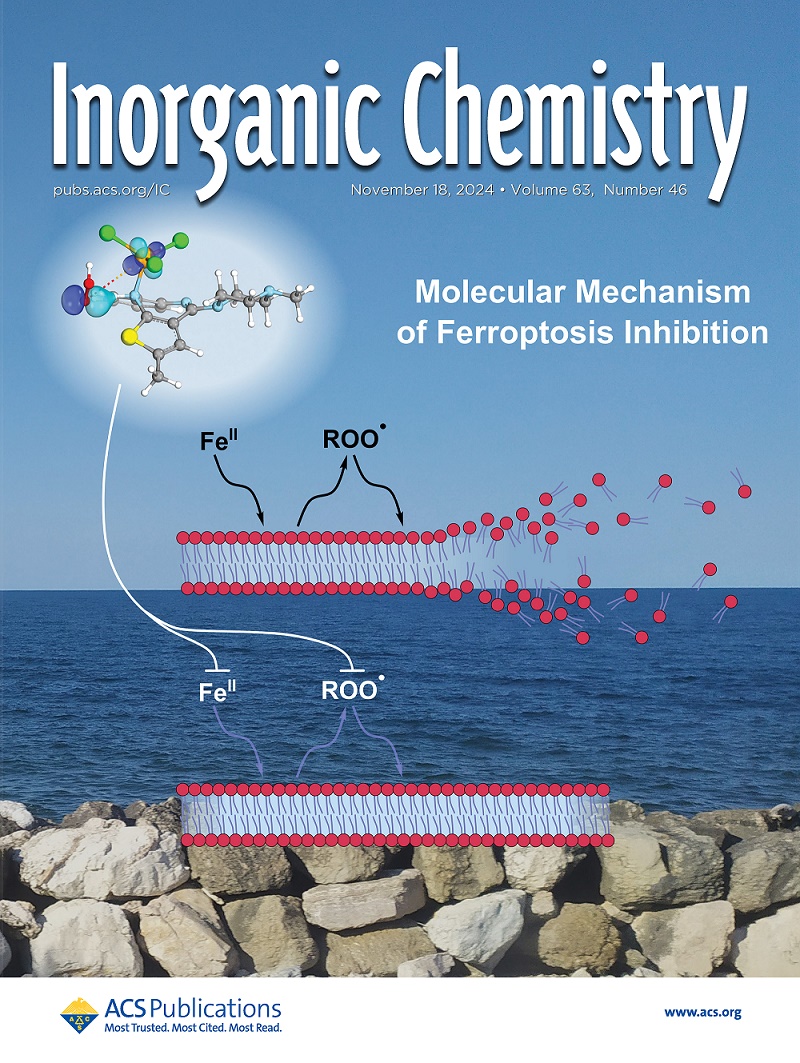高质子导电性磺酸-羧酸Cu-MOFs的ph依赖结构工程
IF 4.3
2区 化学
Q1 CHEMISTRY, INORGANIC & NUCLEAR
引用次数: 0
摘要
具有游离羧酸(COOH)基团的金属有机骨架(MOFs)由于其Brønsted的酸性、极性和氢键能力而成为固态质子导电材料。本文以2,2′-二磺酸-4,4′-氧化苯甲酸二钠(Na2H2DSOA)和4,4′-联吡啶(4,4′-bpy)为配体与Cu(II)配位,通过调整反应溶液的pH,合成了两种不同尺寸的Cu- mof。CuDSOA-1 ([Cu(4,4 ' -bpy)2(H2O)2][Cu(H2DSOA)2(4,4 ' -bpy)(H2O)2]·12H2O))和CuDSOA-2 ([Cu2(DSOA)(4,4 ' -bpy)2(H2O)2]·4H2O)具有不同的维数和结构,这主要是由于pH对羧酸去质子化的影响。值得注意的是,含有丰富COOH基团、非配位磺酸基和水分子的CuDSOA-1在95°C和98% RH下的质子电导率为2.46 × 10-2 S cm-1,显著提高了CuDSOA-2(85°C和98% RH下的3.40 × 10-5 S cm-1)。电导率机制为Grotthuss机制,并由氘氢同位素效应证实。本研究提出了一种通过调节pH来控制磺酸羧酸配体与Cu(II)配位的方法,旨在制备具有超高质子电导率的mof。本文章由计算机程序翻译,如有差异,请以英文原文为准。

pH-Dependent Structural Engineering of Sulfonate-Carboxylate Cu-MOFs for High Proton Conductivity
Metal–organic frameworks (MOFs) with free carboxylic acid (COOH) groups are promising for solid-state proton-conducting materials, owing to the Brønsted acidity, polarity, and the hydrogen-bonding ability of COOH groups. In this work, two Cu-MOFs with different dimensions were synthesized by adjusting the pH of the reaction solution using disodium-2,2′-disulfonate-4,4′-oxidibenzoic acid (Na2H2DSOA) and 4,4′-bipyridine (4,4′-bpy) as ligands to coordinate with Cu(II). The resulting compounds, CuDSOA-1 (([Cu(4,4′-bpy)2(H2O)2][Cu(H2DSOA)2(4,4′-bpy)(H2O)2]·12H2O)) and CuDSOA-2 ([Cu2(DSOA)(4,4′-bpy)2(H2O)2]·4H2O), have distinct dimensionalities and structures, mainly due to the pH’s effect on carboxylic acid deprotonation. Notably, CuDSOA-1 with abundant COOH groups, uncoordinated sulfonate groups, and water molecules shows a significantly enhanced proton conductivity of 2.46 × 10–2 S cm–1 at 95 °C and 98% RH, surpassing CuDSOA-2 (3.40 × 10–5 S cm–1 at 85 °C and 98% RH). The conductivity mechanism was found to be a Grotthuss mechanism, confirmed by deuterium–hydrogen isotopic effects. This study offers a method to control the coordination of sulfonic-carboxylic acid ligands with Cu(II) by pH adjustment, aiming to create MOFs with ultrahigh proton conductivity.
求助全文
通过发布文献求助,成功后即可免费获取论文全文。
去求助
来源期刊

Inorganic Chemistry
化学-无机化学与核化学
CiteScore
7.60
自引率
13.00%
发文量
1960
审稿时长
1.9 months
期刊介绍:
Inorganic Chemistry publishes fundamental studies in all phases of inorganic chemistry. Coverage includes experimental and theoretical reports on quantitative studies of structure and thermodynamics, kinetics, mechanisms of inorganic reactions, bioinorganic chemistry, and relevant aspects of organometallic chemistry, solid-state phenomena, and chemical bonding theory. Emphasis is placed on the synthesis, structure, thermodynamics, reactivity, spectroscopy, and bonding properties of significant new and known compounds.
 求助内容:
求助内容: 应助结果提醒方式:
应助结果提醒方式:


